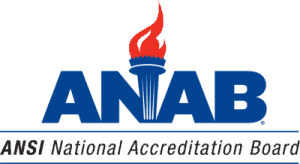Verification Bodies and SEC Rule on GHG Disclosures

As the world grapples with controlling carbon emissions, demand is growing for carbon-related disclosures. As this demand inspires an increasing amount of regulation related to emissions, such as the 2024 SEC rule on climate-related disclosures, compiling accurate and transparent data adds credibility to organizations that report publicly. Having this data independently verified can enhance credibility and reduce the risk of misreporting.
SEC Rule to Enhance and Standardize Climate-Related Disclosures
On March 6, 2024, the U.S. Securities and Exchange Commission (SEC) approved a landmark rule on climate-related disclosures. The SEC rule will require companies to provide a narrative discussion of their identification, management, and oversight of climate-related risks, including disclosure of their emissions footprint. Specifically, the rule requires companies to disclose material scope 1 and scope 2 emissions. These disclosures then must be independently reviewed. The requirements will be phased in without scope 3 emissions included. Scope 1 and Scope 2 reporting relate to a company’s direct emissions and their indirect emissions from purchased energy. Scope 3 emissions involve accounting for emissions along a company’s supply chain, which creates greater challenges in compiling credible and accurate data.
For disclosures outside of financial statements, such as scope 1 and scope 2 emissions disclosures, the SEC has progressively stronger verification requirements, starting with limited assurance and eventually reasonable assurance. Limited assurance provides a lower level of assurance than reasonable assurance but typically is less costly and common for companies that disclose Environmental, Social, and Governance (ESG) data, including climate-related information. The final rule follows numerous recent voluntary and mandatory climate and ESG-related disclosure requirements, including the International Financial Reporting Standards, the Sustainability Disclosure Standards, the E.U. Corporate Sustainability Reporting Directive, and California climate legislation, such as AB 32, The Global Warming Solutions Act.
How Does the SEC Rule Relate to Accredited Validation / Verification Bodies?
While accredited verification is not required to provide assurance on the emissions disclosures the rule requires, the SEC has allowed bodies other than financial auditors to perform assurance under the rule. Therefore, there is increased value in having an experienced verification body following international best practice to provide the assurance. The advantages to pursuing verification with an ISO 14065 accredited verification body include:
- The accredited VVB undertaking the assurance engagement is held to high standards of ethical conduct, impartiality, sectoral competence, and due process;
- An accredited VVB with direct experience verifying emissions across multiple voluntary and regulatory frameworks, will know common reporting pitfalls;
- Accredited third-party verification can help identify areas of weakness and opportunity in quantification, monitoring, and reporting;
With limited assurance, the verifier applies fewer evidence-gathering activities and may not pursue evidence trails to the same depth as in reasonable assurance. However, for an ANAB verification body, there is expected to be a heavy focus on data controls and their reliability. Inadequacies or insufficiencies of evidence must be addressed by the verifier in the same manner, regardless of the assurance level. Companies affected by the SEC rule may seek to engage with an accredited verification body. ANAB’s Validation and Verification Accreditation ensures competent, credible, and independent third-parties evaluate the validity of greenhouse gas claims. Independent third-party verification therefore improves data reliability and provides necessary assurances that reporting entities are accurately calculating and reporting emissions.
ANAB accredited and applicant verification bodies are publicly posted on the ANAB Directory.
ANAB’s Validation and Verification Accreditation
ANAB’s Validation and Verification Accreditation program provides accreditation to organizations providing validation and/or verification of claims. The four standards, which follow, are applicable to the program in the context of environmental information:
ISO/IEC 17029, Conformity assessment, General principles and requirements for validation and verification bodies. This standard sets high-level requirements for organizations providing validation and/or verification services.
ISO 14065, General principles and requirements for bodies validating and verifying environmental information. This standard is the sector-specific application of ISO/IEC 17029 for environmental information.
ISO 14064-3, Greenhouse gases Part 3: Specification with guidance for the verification and validation of greenhouse gas statements. This standard provides a framework for evaluating GHG statements and lays the groundwork for the determination of materiality and level of assurance.
The first three standards provide ANAB with a complete set of requirements that address critical issues such as requirements for the competence, ethical conduct, consistent operation, accuracy, correctness, due process, and impartiality of bodies performing validation/verification as conformity assessment activities. ISO 14064-3 adds additional rigor to the validation and verification process, such as ensuring validation or verification findings, conclusions, and opinions are truthfully and fairly presented, and that conservative values and assumptions are used.. The standard requires the VVB take an evidence-based approach, ensuring the validation or verification engagement uses a rational method for reaching reliable and reproducible conclusions based on sufficient and appropriate evidence.
An additional layer under ISO 14064-3 is applied when the reporter selects a reporting methodology from a GHG reporting regulation or voluntary reporting framework. ANAB works with most voluntary project-based programs and an increasing list of regulatory programs. See the list of programs for more information.






